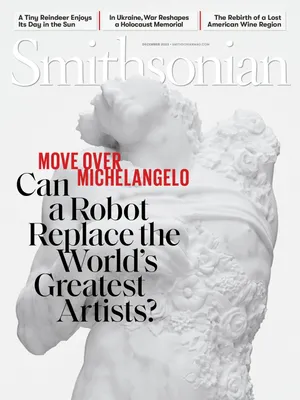The Uniquely American History of Eggnog, Everyone’s Favorite—or Least Favorite—Holiday Quaff
This Yuletide mainstay continues to warm cockles and ventricles everywhere
:focal(3360x2240:3361x2241)/https://tf-cmsv2-smithsonianmag-media.s3.amazonaws.com/filer_public/39/30/39303486-ccf3-48cd-85ea-0f5d5370df61/gettyimages-1061069198.jpg)
In early 1815, distinguished representatives from the United States and Britain gathered in Belgium to ratify the treaty that ended the War of 1812. To celebrate the success of the peace talks, Massachusetts’ Pittsfield Sun reported, President James Madison’s stepson and secretary, John Payne Todd, “invited some gentlemen from his country and some others, to partake of a liquor with which the Americans used to treat their friends on Christmas Day.” That drink was already an American staple: eggnog.
The creamy, spiced beverage is believed to have originated in medieval Britain as “posset,” a comforting mixture of hot milk or cream, wine or ale, and spices. In the 13th century, some monks even began adding whipped eggs and figs to their possets—but the scarcity of the more expensive ingredients, including eggs and sherry, made this proto-eggnog a luxury reserved mainly for the British elite.
When the beloved drink crossed continents to North America in the mid-1700s, it became known as “egg-n-grog,” a term derived from the Scottish and Gaelic word noggin, which means cup, and grog, an English term for hard booze, often rum. The American colonists soon shortened that to “eggnog,” a term that first appeared in a poem by Maryland minister Jonathan Boucher around 1774.
George Washington was known to serve his own version to guests at Mount Vernon. The drink even once sparked a riot at the United States Military Academy at West Point in 1826, when campus staff intervened after cadets, possibly including a young Jefferson Davis, served eggnog at a boisterous Christmas party despite the school’s ban on alcohol. The drink’s wintry spices, and the preference for serving it hot, made nog a Yuletide mainstay.
As milk, eggs, sugar and rum became more affordable and abundant, eggnog became accessible to everyday Americans. Today, people around the world enjoy it, often putting regional spins on the recipe. Versions include Puerto Rican coquito, which contains coconut milk or cream, and Mexican rompope, which uses egg yolks and a few pinches of baking soda.
Despite its origins, eggnog has not always been widely loved in Britain. One contributor to its decline there is another hot beverage—tea, which took the country by storm in the 17th century, when the East India Company began importing it in large quantities. And while eggnog isn’t universally loved in the U.S.—some Americans loathe it—we nonetheless consume more than 15 million gallons of eggnog annually. That works out to around 240 million cups of eggnog each year—enough to ensure that every adult American can enjoy a seasonal tipple.
